By Ariana Rawls Fine
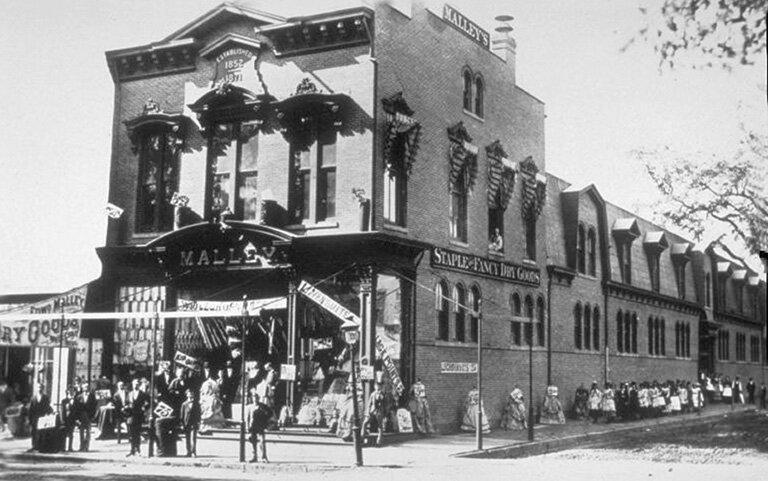
As we look back at 2023, let’s go even farther back in time to the companies and logos that we distinctly remember from our childhood decades later. This is by no means an exhaustive list as it seems we have had quite a few department stores founded, headquartered or based around Connecticut from our youth. As we delve into holiday time, some store names, such as G. Fox & Co., bring back holiday tradition memories of peering into the store windows, anticipating what the festive display will look like. Supermarkets also play a part in our childhood memories, whether it was being dragged to go shopping with our parents or hanging in the parking lots as teenagers. Other brands also come to mind related to our youth.
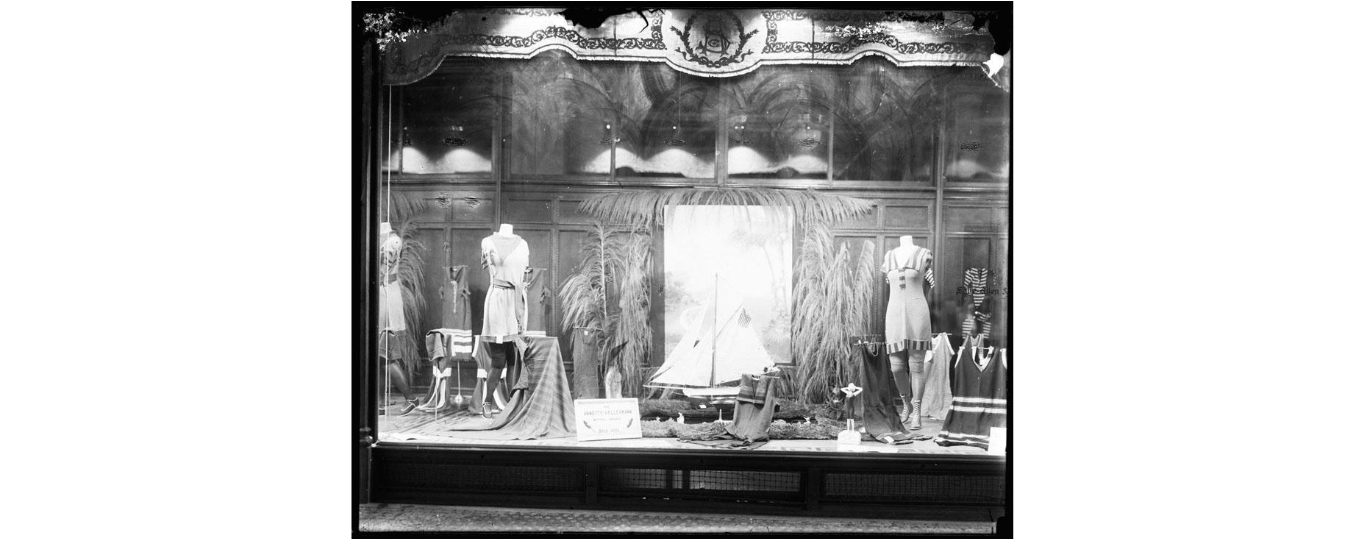
For a historic perspective, the above image provides a glimpse of downtown Hartford in the 1930s with an elevated view of commercial buildings along Main Street. At far left is G. Fox & Co. Beside it, the Richardsonian Romanesque brownstone building is the Cheney block, housing Brown, Thomson & Co. Boats are on the Connecticut River in the background. The Bulkeley Bridge and a railroad bridge are visible, described the Connecticut Museum of Culture and History.
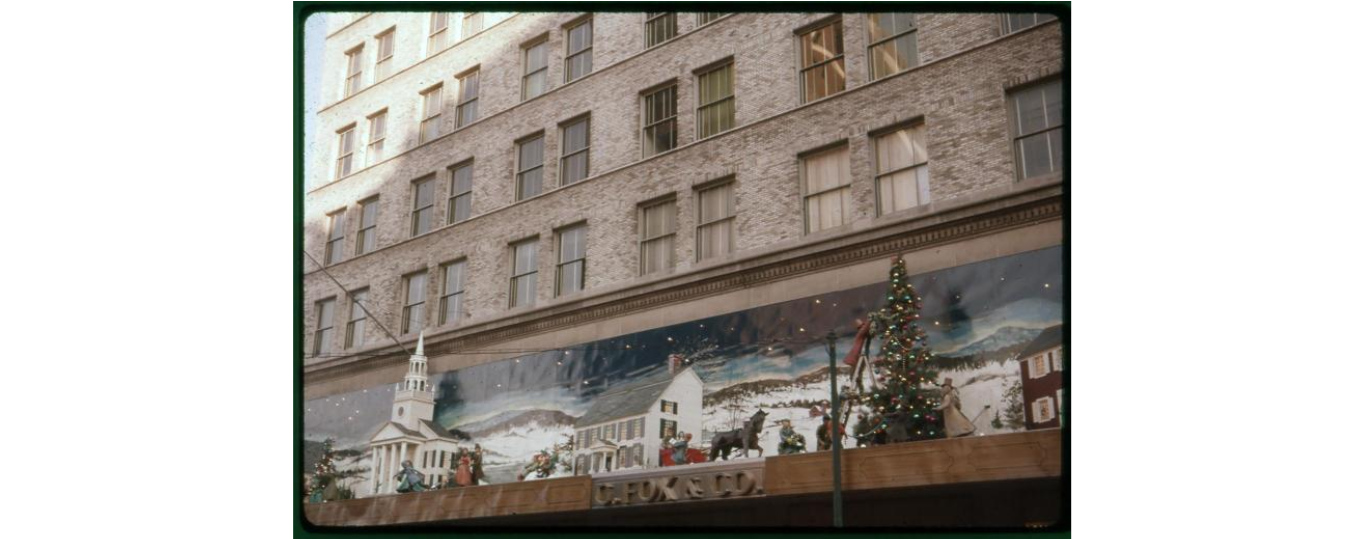
Fox. & Co.
Perhaps the more locally famous one is G. Fox & Co., which was established in 1847 in Hartford. “The customer is always right.” “If you can get it anywhere, you can get it at G. Fox & Co.” “If G. Fox says it’s so, it must be so.” “G. Fox & Co. is never knowingly undersold.” These are four principles that their service customer service adhered to, according to the Connecticut Museum of Culture and History. Some of the images from the museum’s collection include the store’s holiday-focused window themes. Hartford area residents have numerous memories of the store, presents and the holidays.
Sage-Allen Department Store
Although smaller than the larger G. Fox & Co. nearby, Sage-Allen was well-known in Connecticut for its clothing, home, children’s and other products. The department store, which was located in Hartford, became a chain of stores in three states before it closed in 1994: Connecticut, Massachusetts and New Hampshire. Did you know that its flagship building was built in 1898 and still stands today with living and retail spaces after a restoration? Who remembers the Sage-Allen’ clock and the story of its return to the building after storm damage and relocation?
The Edw. Malley Co.
In another part of the state, Malley & Co. made its debut as a dry goods store in New Haven in 1852. Finally renamed as The Edw. Malley Co., locals nicknamed it Malley’s. After a fire and multiple renovations through the years, the department store innovated with new store technology with New England’s first self-leveling elevator in the 1920s and again in 1958 with escalators, as mentioned in Business New Haven’s “The New Haven Enterprise Hall of Fame” on February 5, 2007. Although strategically placed when the company was in business, its last store in the well-placed location entering the city from the Route 34 Connector soon became a dilapidated reminder for area residents of its demise after 1982 until the building was demolished in 1997.
Bradlees
Bradlees Department Store, a.k.a. Bradlees, opened its first store here in Connecticut in New London in 1958. Did you know that the company was named after Bradley International Airport, according to Volume 12 of the International Directory of Company Histories (St. James Press; Detroit; 1996; p. 48)? There was a reason you usually saw Stop & Shop supermarkets located next to Bradlees stores; Stop & Shop acquired the brand from 1961 to 1992. Who ate at the Bradlees lunch counters back in the day? Was a visit to get food there also used as a good behavior incentive by your parents?
During its 1990s peak, the Massachusetts-headquartered company had over 100 stores throughout the Northeast. All stores closed in 2001 after a Chapter 11 bankruptcy the year before.
Caldor’s
Nicknamed as “the Bloomingdale’s of discounting,” as noted by Isadore Barmash in the “A Bloomingdale’s of Discounting” article in The New York Times on October 28, 1979, Caldor, Inc. moved from a modest New York loft store launched in 1951 to open a second store in Norwalk, and later became the regional chain we were all familiar with. Some of the discount department store chain’ slogans still ring in our heads: “Where Shopping Is Always a Pleasure” and “Bring Home the Difference.” Sadly, this stalwart of our youth closed in mid-1999.
M. Read Co.
Founded in 1857 by D. M. Read and closed by 1993, the company was headquartered in Bridgeport and served Connecticut and New York. In the past, the classy flagship Bridgeport location was considered the biggest department store in New England. Did you know that space, which was closed in 1981, is now known as Artspace Read’s?
Gimbels
Although founded in Indiana in 1842 by Adam Gimbel, Gimbel Brothers, a.k.a Gimbels, eventually became known in Connecticut, Pennsylvania, New York, New Jersey and Wisconsin. In the 1950s, it had over 50 stores, which dwindled down to 35 when it closed in 1987. Did you know that the company reportedly started the oldest Thanksgiving parade in 1920 in Pennsylvania?
Ames Stores
In 1958, Ames Department Stores Inc. was first started in Massachusetts by three Nutmegger brothers and a partner but became based in Rocky Hill in Connecticut. It grew and grew. We remember in our childhood seeing them everywhere when we took cross-country road trips. The discount store chain had nearly 700 locations across 20 states at one point. By 2002, it began closing its remaining 300-plus stores.
Pathmark
Although based in New Jersey, the Pathmark supermarket chain could be found under several owners in New York, New Jersey, Connecticut, Pennsylvania, Delaware and Maryland from 1968 until 2015. Whether you remember Arlene Francis, the original spokesperson, or actor James Karen or Peter “Produce Pete” Napolitano from the chain’s commercials, you definitely remember that red, white and blue logo. Were you aware that the chain was started by a subgroup of Wakefern Food Corporation, which was the ShopRite parent company? The group opened ShopRite supermarkets in the 1960s across six states. By the late 1960s, the Supermarkets General restructured their stores as Pathmark supermarkets. The remaining two Connecticut locations—and the last ones in New England—closed in 1998.
Who remembers these slogans from Pathmark commercials through the years? “You’ve got Pathmark. Who could ask for anything more?” “Count on Pathmark for Savings That Count.” “Shop Smart, Pathmark Smart.”
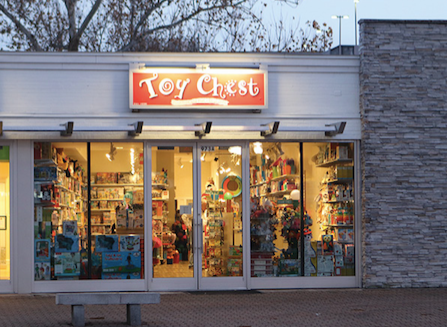
The Toy Chest
Another staple for over 66 years before closing its doors in January 2023 is The Toy Chest in West Hartford. In the small-world way of Connecticut, did you know that founder Morris Shlien was the head toy buyer at G. Fox & Co. after coming home from WWII and before he founded his old-time toy store in 1956, according to CT Insider? He owned it until the late 1980s, when Marilyn Caruso and others bought it.
Dickinson’s Witch Hazel
Although not a company with a storefront, its products were easily recognizable by any who grew up here and are now offered internationally. Dickinson’s Witch Hazel was started in 1866 in Connecticut by Rev. Thomas Newton Dickinson and is currently headquartered in East Hampton.
There are still new things to be learned about a brand that has been around in our proverbial “backyard” for nearly two centuries. “For over 150 years, we have sustainably harvested certified organic witch hazel from throughout New England during the cold Northeast winters when the plant is dormant, yet in peak bloom, which in-turn, minimizes environmental impact and promotes the health of the forest,” the company explains on its website.


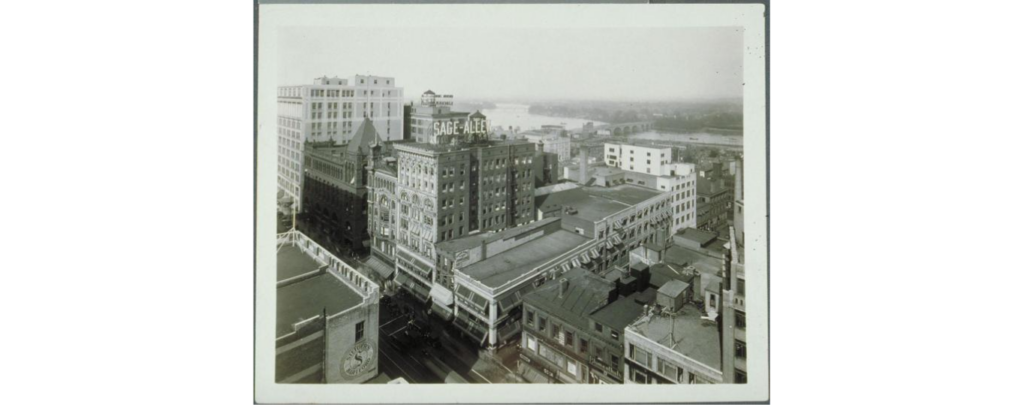





More Stories
Over 50, Underestimated: The Grandfluencers Redefining Age on Social Media
Building Resilient Businesses: Strategies for Success
Summer Means Convertibles